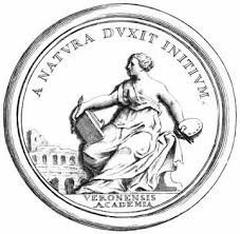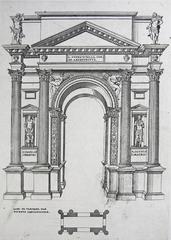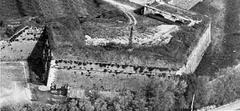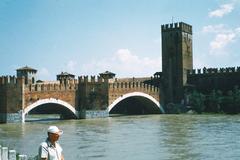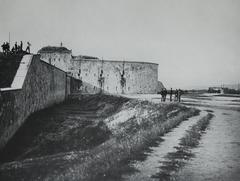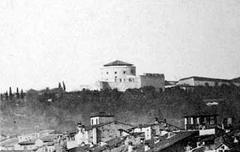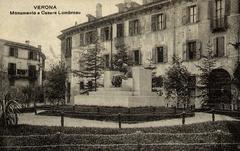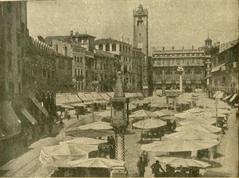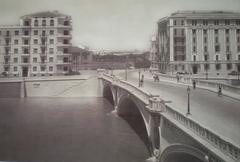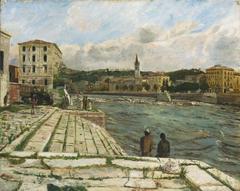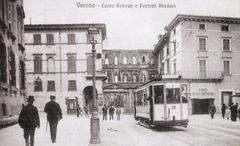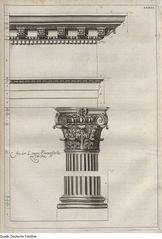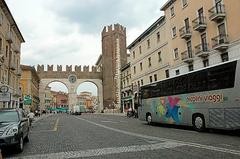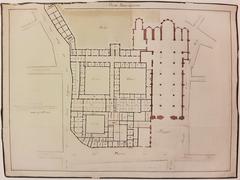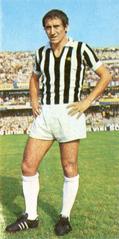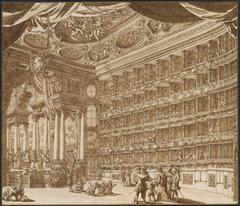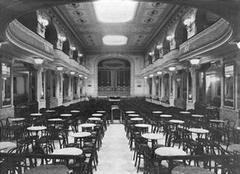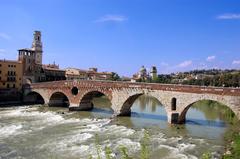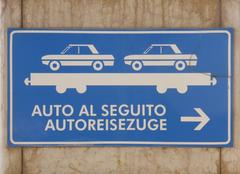Santa Felicita Church Verona: Visiting Hours, Tickets, and Historical Significance
Date: 14/06/2025
Introduction
Santa Felicita Church in Verona is a remarkable yet often overlooked treasure nestled within the city’s UNESCO World Heritage historic center. With origins dating back to the 12th century, the church invites visitors to journey through Verona’s rich tapestry of religious, architectural, and cultural history. Unlike the city’s more prominent landmarks, such as the Arena di Verona or Basilica di San Zeno, Santa Felicita offers an intimate and contemplative experience, showcasing a harmonious blend of Romanesque, Gothic, Renaissance, and Baroque features that reflect Verona’s evolution from Roman municipium to Renaissance hub.
Today, Santa Felicita not only preserves its sacred and artistic heritage but also adapts to contemporary cultural life—serving as a venue for concerts, exhibitions, and even unique dining experiences. Accessibility improvements ensure visitors of all abilities can comfortably explore its historic spaces. Integrated into Verona’s cultural circuit, the church sits close to attractions like Ponte Pietra and the Roman Theatre, making it ideal for travelers seeking authentic experiences beyond the typical tourist path.
This comprehensive guide details everything you need to know for your visit: current hours, tickets, tours, accessibility, architectural highlights, nearby attractions, and practical travel tips. Whether you’re a history enthusiast, art lover, or cultural explorer, Santa Felicita Church promises a memorable and enriching stop in Verona. For the latest updates, consult the Santa Felicita Church Verona and Verona Tourism Official Page.
Table of Contents
- Historical Overview and Architectural Features
- Key Architectural Features
- Cultural and Historical Significance
- Practical Visitor Information
- Culinary Experiences in the Santa Felicita District
- Sustainable Tourism and Community Engagement
- Visitor Experience and Travel Tips
- Nearby Attractions
- Frequently Asked Questions (FAQ)
- References and Useful Links
Historical Overview and Architectural Features
Early Origins and Development
Santa Felicita’s origins trace back to the 12th century, coinciding with the rise of Romanesque architecture in northern Italy. Modest compared to Verona’s grand basilicas, Santa Felicita nevertheless played a significant role in the spiritual and social life of its neighborhood (Nothing Familiar). Its initial design featured sturdy stone walls and rounded arches typical of the Romanesque style.
Transformations Over the Centuries
As Verona flourished during the Renaissance, Santa Felicita underwent significant enhancements. Renaissance and Baroque artistic elements were added, including ornate altarpieces and frescoes in the chapels. These layers of artistry mirror the city’s broader cultural and architectural evolution (The Travel Folk).
Modern Era and Adaptive Reuse
In recent years, Santa Felicita has demonstrated innovative adaptive reuse. The church now serves not only as a sacred space but also as a venue for cultural events and a unique dining location, reflecting Verona’s commitment to heritage preservation while embracing modern community life (Nothing Familiar).
Key Architectural Features
Exterior and Façade
Santa Felicita’s exterior is defined by its simple yet elegant Romanesque façade, constructed from local stone. A single arched doorway and a modest bell tower underscore the church’s intimate scale, contrasting with Verona’s grander basilicas.
Interior Layout and Artistic Elements
The interior is notable for its rhythmic Romanesque columns, arches, and a beautifully crafted wooden ceiling. Side chapels house Renaissance and Baroque artworks, including vibrant frescoes and altarpieces that illuminate the evolution of sacred art in Verona.
Adaptive Spaces and Preservation
Sensitive redesign has enabled the nave and aisles to accommodate dining tables for special events while preserving original features. Ongoing restoration focuses on maintaining structural integrity, conserving frescoes, and installing energy-efficient lighting that highlights the church’s artistry while minimizing environmental impact (AP News).
Cultural and Historical Significance
Role in Verona’s Religious Life
Dedicated to Saint Felicity, an early Christian martyr, the church continues to serve as a parish for baptisms, weddings, and local religious festivals, such as the feast of San Zeno (Trips & Leisure).
Urban Integration and Contemporary Use
Santa Felicita’s location amid medieval streets and near the Adige River makes it a central point in Verona’s historical core. It is now part of the city’s cultural circuit, hosting concerts, exhibitions, and educational events, which reinforce its ongoing relevance (World History Journal).
Practical Visitor Information
Location
Santa Felicita Church is situated within Verona’s historic center, a short walk from Piazza delle Erbe, Castelvecchio, and other landmarks. The address and detailed directions can be found on the official website.
Visiting Hours
- Standard Hours: 9:00 AM to 6:00 PM, Tuesday to Sunday. Closed Mondays and major public holidays.
- Last Admission: 5:30 PM.
- Note: Hours may vary during religious services or special events. Always check official updates before your visit.
Tickets and Reservations
- General Admission: Free, with donations welcomed for preservation.
- Special Events/Dining: Reservation or ticket may be required.
- Guided Tours: Available via local tour operators and the Verona tourism office. Tours are offered in multiple languages.
Accessibility and Dress Code
- Physical Access: The church is accessible on foot from the city center. Ramps and lifts are available for visitors with mobility needs; accessible restrooms are located nearby (AP News).
- Dress Code: Modest attire required—shoulders and knees covered.
- Photography: Allowed without flash; restrictions may apply during services.
Culinary Experiences in the Santa Felicita District
The neighborhood surrounding Santa Felicita is a haven for gastronomy:
- Traditional Veronese Cuisine: Sample local favorites like risotto all’Amarone and bollito con pearà at nearby trattorias.
- Modern Dining: Contemporary bistros blend regional recipes with international influences; wine bars offer tastings of Valpolicella and Soave.
- Cafés and Bakeries: Enjoy pastries such as sfogliatine di Villafranca with Italian coffee in cafés overlooking the church.
Many local establishments participate in the “Verona in Tavola” festival, combining culinary innovation with cultural performances (Verona in Tavola Festival Information).
Sustainable Tourism and Community Engagement
Santa Felicita encourages responsible tourism by managing visitor flows with timed entry, especially during peak seasons. Educational programs and collaborations with local organizations promote heritage appreciation and support for local businesses. Eco-friendly transport options, such as bike rentals and electric shuttles, align with Verona’s sustainability goals.
Visitor Experience and Travel Tips
- Atmosphere: Santa Felicita offers a tranquil and contemplative environment, perfect for reflection and art appreciation.
- Best Times to Visit: Late spring and early autumn are most comfortable. Weekday mornings are quietest.
- Events: Check the church’s event calendar for concerts, art exhibitions, or special guided tours, especially during festivals.
- Safety: Verona is generally safe; standard precautions against pickpocketing are advised.
Nearby Attractions
Enhance your itinerary by visiting these nearby sites:
- Arena di Verona: Iconic Roman amphitheater.
- Castelvecchio: Medieval fortress and art museum.
- Torre dei Lamberti: Panoramic city views.
- Roman Theatre: Ancient open-air theater.
- Adige Riverfront: Scenic walks and views.
All are easily accessible on foot from Santa Felicita.
Frequently Asked Questions (FAQ)
What are Santa Felicita’s visiting hours?
Open Tuesday to Sunday, 9:00 AM to 6:00 PM; closed Mondays and holidays.
Is there an entrance fee?
General admission is free; donations are appreciated. Special events may require tickets.
Are guided tours available?
Yes, bookable through local tour operators or the tourism office.
Is the church wheelchair accessible?
Yes, with ramps and lifts; accessible restrooms nearby.
Can I take photographs inside?
Photography is allowed without flash, except during services.
What nearby attractions should I visit?
Arena di Verona, Castelvecchio, Torre dei Lamberti, and the Adige riverfront.
References and Useful Links
- Santa Felicita Church Verona
- Verona Tourism Official Page
- Nothing Familiar – Verona Italy Travel Guide
- AP News – Accessibility in Italian Landmarks
- Trips & Leisure – Verona Attractions
- Visit Verona – Church and Art
- Verona in Tavola Festival Information
- World History Journal – Verona’s Heritage
Summary and Recommendations
Santa Felicita Church stands as a vibrant testament to Verona’s enduring faith, artistry, and community spirit. Its blend of historical architecture, artistic treasures, and modern cultural engagement offers a unique and tranquil experience for visitors. Proximity to other major landmarks and culinary hotspots makes it an essential stop for those wishing to understand Verona’s deeper identity.
Before your visit, check the latest hours, event schedules, and accessibility details via official channels. Engaging in guided tours and attending special events will enrich your experience. For seamless travel, offline guides and insider tips are available through the Audiala app and official tourism resources.
Images and Media Suggestions:
- Include high-quality images of the church façade, interior frescoes, and marble altars, with descriptive alt text.
- Embed a map indicating the church’s location relative to major Verona landmarks.
- Offer links to virtual tours via the official website.
Internal Links Suggestions:
- Connect to guides on Verona Cathedral, Castelvecchio, and local travel itineraries.
All factual information has been verified with the latest official and reputable tourism sources.
